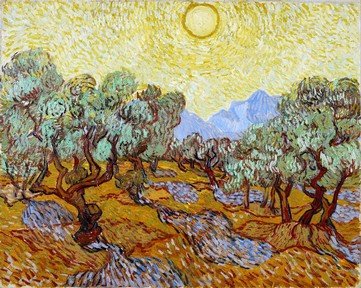Quiz Answer Key and Fun Facts
1. Some male figures are always portrayed in the nude. Adam is the best example of this kind of figure. While living in the Garden of Eden, Adam wasn't bothered by his nudity - it became only a reason for shame after the Original Sin.
Many prominent artists have portrayed Adam. But there is a significant difference between the portraits - sometimes Adam wears a beard (self-evidently, for the razor blade was not yet invented), sometimes not. Which of the following artists did portray Adam with beard? The painting I hint at is part of a polyptych you could find in Belgium.
2. The best known male nude statue is the "David" by Michelangelo. You'll find the original statue in the Galleria museum in Florence, Italy.
There are many representations of David. The statue by Michelangelo and the statues by three of the following artists are considered prototypes of Renaissance sculpting. But which Italian artist is the "odd one out" (in terms of his portrayal of David)?
3. St. Sebastian was a Roman soldier who converted to Christianity. As he refused to bow for the Emperor, he was sentenced to death. Renaissance art generally shows St. Sebastian, dressed only in a loin-cloth, and pierced by some arrows. Gozzoli deviated from the usual: he depicted a few dozens of arrows. However, St. Sebastian survived and was later killed in another way. What way?
Paolo Veronese made a picture showing the execution of St. Sebastian. He also made a painting with St. Sebastian as target for arrow shooting practice.
4. St. Lawrence was a martyr who was executed by roasting on the fire. Gian Lorenzo Bernini made, in 1615, a painting (format: 66 cm by 108 cm, this is 26 inch by 42.5 inch) in which we can witness the martyrdom of St. Lawrence.
5. Nicolas Adam sculpted in 1737 a statue of a Greek mythological figure who was chained to a rock and whose liver was picked out every day by an eagle. In this dramatic scene, the mythical character is fully nude (but a drape flies at the critical places). Who is this mythical character?
He was also portrayed in a painting by Gustave Moreau in 1868 and in a painting by Peter Paul Rubens in 1611.
6. One of the most frequently portrayed nude males is the sidekick of the Roman goddess Venus. Although he is very frequently portrayed as a very young boy, there are also statues and paintings of the same character in his teenage years. For example, I refer to Bouchardon's statue (1746) and to Rafael's painting (1517).
This minor deity was known under different names: the Greek name Eros and the Latin name Amor were two of his names. But what is the name that most artists use for this deity? Please answer in the ENGLISH orthography.
7. A Danish sculptor portrayed in 1817 Ganymede, dressed in only a Phrygian hat, while he gave food and drink to an eagle (who happens to be Zeus according to the Greeks, or Jupiter according to the Romans). Who was this Danish sculptor?
8. Giambologna made in 1563 a bronze statue of a Roman god dressed in a winged helmet. Most pictures of this god show also winged sandals, but Giambologna's statue fixes these wings directly to the bare feet of the god. Who is this Roman god, messenger of the gods? Please answer with the ENGLISH orthography.
9. Let's talk about ancient art. The ancient Greeks have also made some famous artworks. Alas, the paintings have been lost in time, the buildings are mostly in ruins and as for the statues, we have only some Roman copies to judge by.
The Greek Polycleitus the Elder made some nice statues: Discophoros, Doryphoros and Diadumenos - three male nudes that would have been made for the same occasion. What would this occasion probably be? For those of you who haven't studied ancient Greek: the word "phoros" means "bearer".
10. Here's a question on profane male nude, this means an artistic representation in the nude that has not been inspired by religious or mythic motives. (Religious male nudes include for example the statue of David or the paintings and sculptures of St. Lawrence, whereas mythic male nudes include, among others, paintings of Prometheus and statues of Ganymede).
One of the best known profane nudes is the statue of "The Thinker", which was originally intended to depict a famous Italian poet. Silhouettes of this statue are frequently used to indicate some intellectual activity. For example, many quiz associations use this silhouette on their quiz invitations. Who sculpted the statue "The Thinker"?
Source: Author
JanIQ
This quiz was reviewed by FunTrivia editor
agony before going online.
Any errors found in FunTrivia content are routinely corrected through our feedback system.
